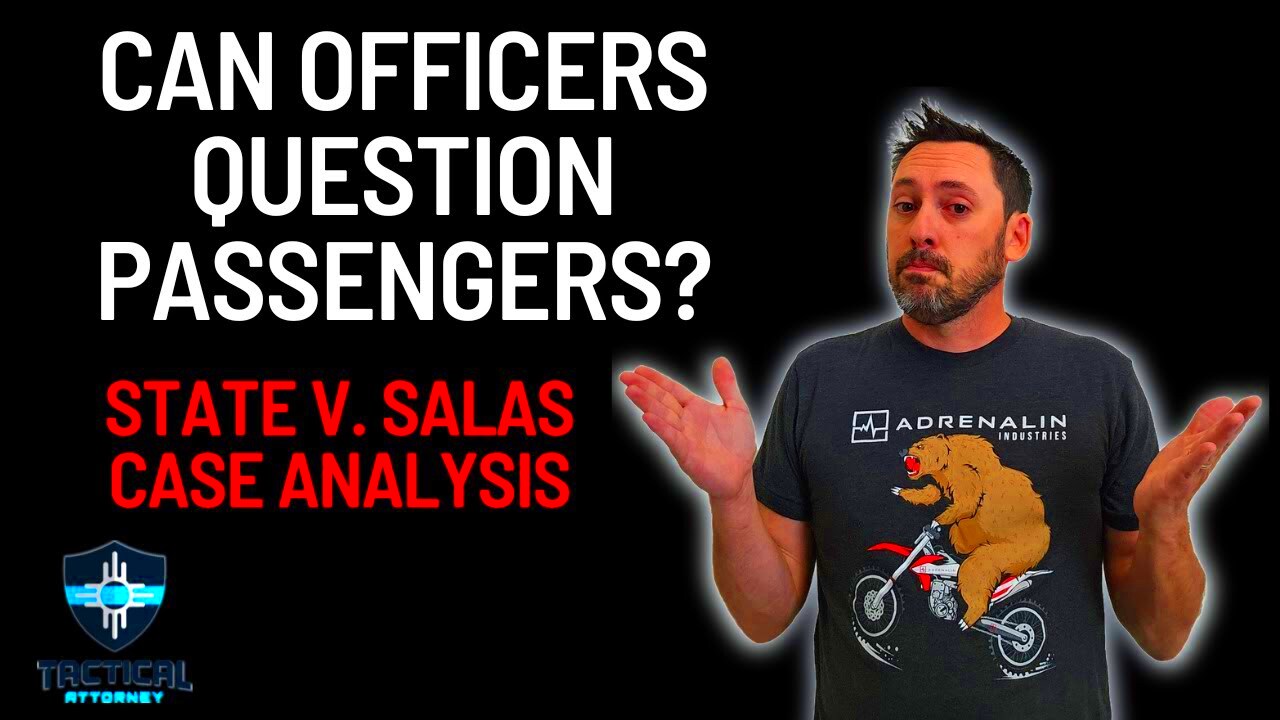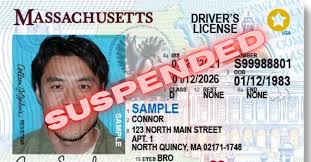A Look at Case Law That All Cops Should Be Familiar With
In the intricate realm of police work grasping the nuances of case law is vital. Its not merely about upholding laws but also comprehending the legal structure that underpins and limits those actions. While delving into case law may appear challenging to many officers it plays a role in carrying out their responsibilities both efficiently and within the boundaries of the law. Picture this scenario; during a patrol you come across a situation where your understanding of case law could sway the outcome between a lawful response and an unwarranted misstep. This insight goes beyond being theoretical; it has real world implications and significance.
Understanding Miranda Rights and Their Impact

The Miranda rights are perhaps one of the most well-known legal protections. Established by the U.S. Supreme Court in Miranda v. Arizona (1966), these rights ensure that anyone in custody is informed of their right to remain silent and to have an attorney. This landmark decision fundamentally changed how law enforcement interacts with suspects, emphasizing the protection of individual rights during interrogations.
Here’s what you need to remember:
- Miranda Warning: Suspects must be informed of their rights before any custodial interrogation.
- Voluntary Waiver: A suspect can waive these rights, but it must be done knowingly and voluntarily.
- Consequences of Violation: Failing to provide Miranda warnings can lead to the exclusion of statements made by the suspect from the trial.
From my perspective grasping the significance of Miranda rights proved essential in an interrogation situation where the suspects remarks held importance for the case. Upholding these rights not only prevented complications but also bolstered the credibility of the gathered evidence.
Key Supreme Court Cases on Search and Seizure
Search and seizure laws, shaped significantly by Supreme Court cases, are central to police work. The Fourth Amendment protects citizens from unreasonable searches and seizures, but interpreting what is “reasonable” has been the subject of many important rulings. Here are a few key cases:
| Case | Year | Significance |
|---|---|---|
| Katz v. United States | 1967 | Established the principle of “reasonable expectation of privacy” in phone conversations. |
| Terry v. Ohio | 1968 | Permitted “stop and frisk” procedures based on reasonable suspicion. |
| California v. Greenwood | 1988 | Determined that garbage left at the curb is not protected by the Fourth Amendment. |
These court decisions underscore the careful weighing of law enforcement priorities and personal freedoms. In real life a thorough grasp of these rulings can assist officers in navigating lawful choices and avoiding breaches of the constitution during search and seizure operations. I have witnessed how being well acquainted with these established cases can be beneficial in carrying out searches that adhere to legal norms and safeguarding the admissibility of collected evidence in court proceedings.
Case Law Governing Use of Force
Here are some key cases to consider:
- Graham v. Connor (1989): This case established the “objective reasonableness” standard for evaluating police use of force. The Court ruled that the assessment should be based on what a reasonable officer would do in the same situation, considering the facts known at the time.
- Riley v. California (2014): Although focused on searches, this case has implications for use of force, emphasizing that officers must respect privacy even during arrests.
- Monell v. Department of Social Services (1978): This case addresses municipal liability for police actions, clarifying that local governments can be held responsible for constitutional violations if they follow policies that lead to such violations.
Having collaborated with law enforcement I witnessed firsthand the impact of these decisions on their operations. For example during an arrest grasping the Graham standard assisted officers in balancing between taking action and using excessive force. This insight goes beyond being mere legal terminology; it plays a role in upholding fairness and fostering public confidence.
Recent Developments in Qualified Immunity
Here are a few noteworthy transformations and conversations that have taken place.
- Supreme Court Rulings: Recent rulings have scrutinized qualified immunity more closely, questioning its application in cases where excessive force or civil rights violations are alleged.
- Legislative Proposals: There have been multiple proposals aimed at reforming or eliminating qualified immunity to increase accountability for law enforcement officers.
- Public Opinion: Growing public discourse and protests have pressured lawmakers to reconsider how qualified immunity is applied, especially in cases involving police misconduct.
I think it’s important to talk about how qualified immunity has changed over time. It shows the shift between making sure law enforcement works well and keeping them accountable. When I talk to officers they acknowledge the importance of striking a balance—supporting their duties while also being responsible for their actions. Being aware of these changes is key, to navigating the legal system better and building trust, within communities.
Case Law Addressing Racial Profiling
The issue of profiling based on race in law enforcement continues to be a topic of debate with different cases influencing how it is handled legally. While the law clearly states that profiling solely based on race is unfair and not permissible enforcing this principle can prove to be difficult.
Key cases include:
- Whren v. United States (1996): This case addressed pretextual stops, where officers use minor traffic violations as a pretext to investigate more serious crimes. While the ruling upheld the legality of such stops, it sparked debate about the potential for racial profiling.
- Ferguson v. City of Charleston (2001): This case involved drug testing of pregnant women at a public hospital and raised concerns about racial discrimination and privacy rights.
- United States v. Brignoni-Ponce (1975): This case set a precedent on the use of race as a factor in law enforcement activities, emphasizing that race alone is not a reasonable suspicion for stopping individuals.
I believe that the laws regarding profiling are changing as people call for more fairness and equality. Talking with coworkers and community members about these issues highlights the importance of constantly reassessing and improving policing methods. It’s not solely about following rules but also about making sure everyone is treated with dignity and respect.
Legal Precedents in Handling Evidence
Properly managing evidence is essential to maintain fairness in legal proceedings and uphold the principles of justice. There are established legal guidelines that dictate the procedures for gathering, safeguarding and presenting evidence. These guidelines play a role in preventing any manipulation of evidence and ensuring that it complies with the necessary criteria for a trial.
Some important precedents include:
- Weeks v. United States (1914): This case established the “exclusionary rule,” which bars evidence obtained through illegal searches and seizures from being used in court. It’s a cornerstone for protecting defendants’ rights.
- Miranda v. Arizona (1966): Beyond Miranda rights, this case underscores the importance of proper evidence handling during interrogations. Statements obtained in violation of Miranda rights are inadmissible.
- Frye v. United States (1923): This case introduced the “Frye standard” for determining the admissibility of scientific evidence, which requires that the evidence be generally accepted by the scientific community.
Through my interactions with the police I have witnessed the practical application of these legal precedents. For example during a significant drug raid careful management of evidence in accordance with these standards was crucial to the case’s success in court. Familiarity with these precedents goes beyond mere rule adherence; it serves to protect the integrity of the justice system as a whole and ensure that every piece of evidence plays a role in achieving a just outcome.
Important Rulings on Arrest Procedures
The way arrests are made is regulated by legal decisions to ensure that they are carried out in a fair and respectful manner. These decisions strike a balance between the effectiveness of law enforcement and the protection of individuals rights. They ensure that arrests are based on reasonable grounds and that proper procedures are followed to safeguard the process.
Key rulings include:
- Payton v. New York (1980): This case ruled that officers need a warrant to enter a home to make an arrest unless there are exigent circumstances. It highlights the importance of respecting the sanctity of the home.
- Atwater v. Lago Vista (2001): The Supreme Court decided that officers could make arrests for minor offenses, such as traffic violations, without violating the Constitution. This ruling affirms the broad scope of arrest powers.
- Terry v. Ohio (1968): Known for allowing “stop and frisk” procedures based on reasonable suspicion, this case established guidelines for temporary detentions and searches during encounters with suspects.
These decisions provide guidance to law enforcement in making arrests that balance constitutional rights with the need to keep the public safe. I’ve seen firsthand how these rulings impact the work of police officers on a day to day basis. For instance being aware of the warrant requirements in the Payton case has proven helpful in improving the planning and execution of arrests to ensure that they are carried out lawfully while also respecting personal freedoms.
FAQ
What is the significance of the exclusionary rule?
The exclusionary rule, established by Weeks v. United States, prevents evidence obtained through illegal means from being used in court. This rule is crucial for protecting defendants’ rights and ensuring that law enforcement adheres to legal standards.
How do recent rulings affect the use of force by police?
Recent rulings emphasize that use of force must be “objectively reasonable.” Cases like Graham v. Connor guide officers to assess force based on what a reasonable person would do under similar circumstances, taking into account the situation’s specifics.
What should officers know about handling evidence?
Police officers are required to adhere to established legal precedents to ensure that evidence is gathered and stored correctly. This involves familiarizing themselves with the exclusionary rule and the Frye standard regarding evidence. Handling evidence appropriately is crucial for upholding the credibility of the judicial system.
What are the legal requirements for making an arrest?
Legal requirements include having probable cause and, in most cases, a warrant. Rulings such as Payton v. New York highlight the need for warrants for home arrests, while Atwater v. Lago Vista affirms the broad powers of arrest for minor offenses.
Conclusion
Grasping the intricacies of case law is crucial for those involved in law enforcement. The legal precedents explored, ranging from evidence handling to arrest protocols, form the foundation of fair and just policing. These precedents go beyond being concepts; they provide practical guidelines that influence day to day interactions with the community. Through my experiences collaborating with law enforcement I have witnessed firsthand how upholding these standards can impact the effectiveness and perception of police work. Staying well versed in these rulings is essential for ensuring officers operate within legal boundaries, uphold public trust and uphold the tenets of justice. Embracing these insights not only aids in navigating the challenges of contemporary policing but also promotes a more equitable legal system, for all.


